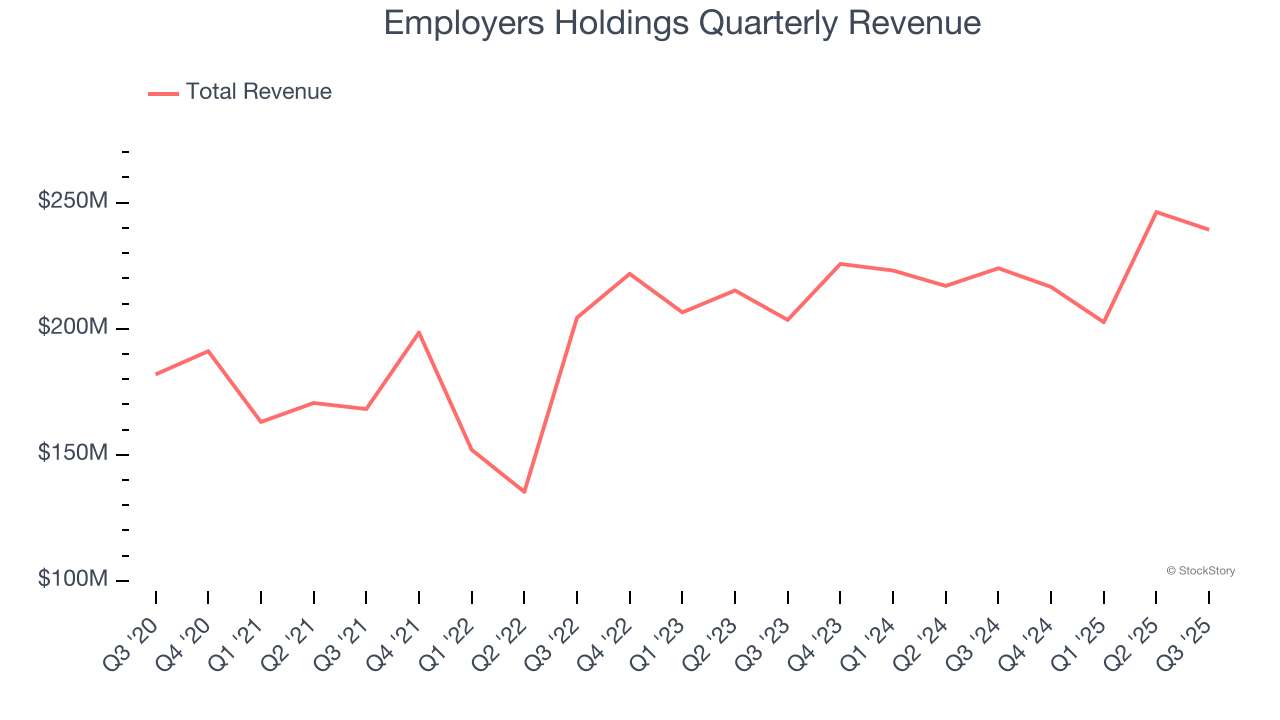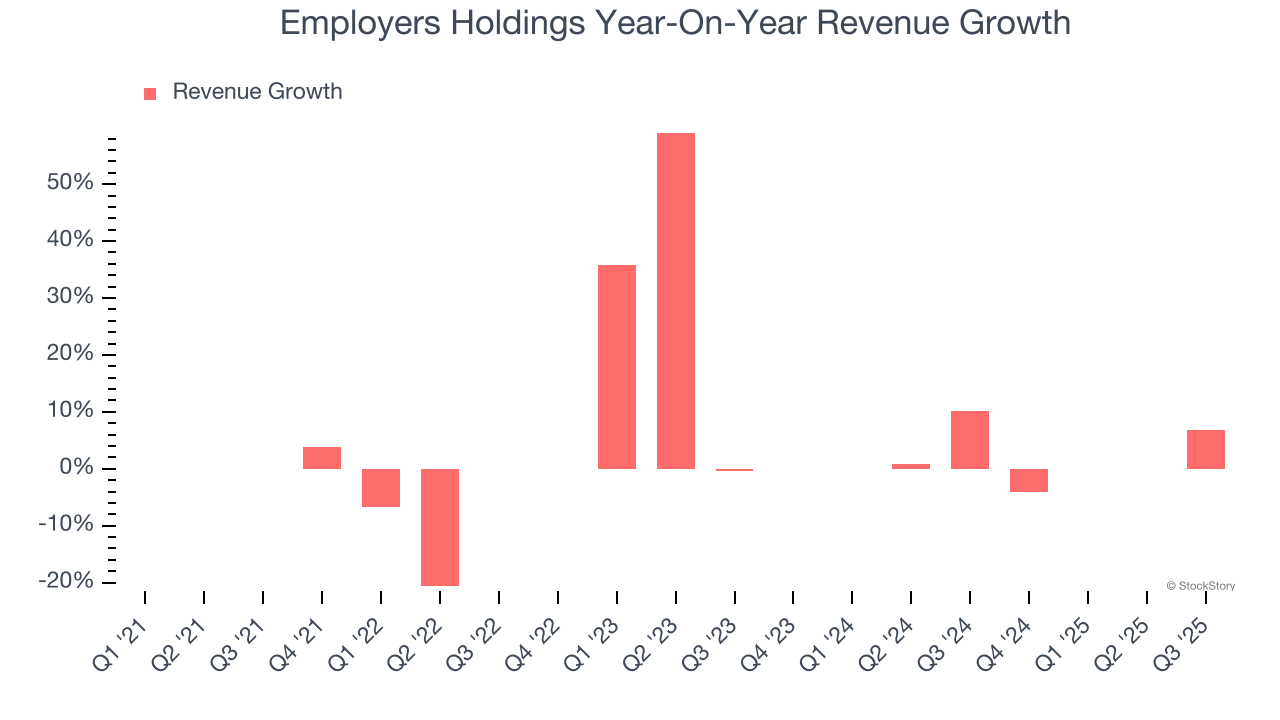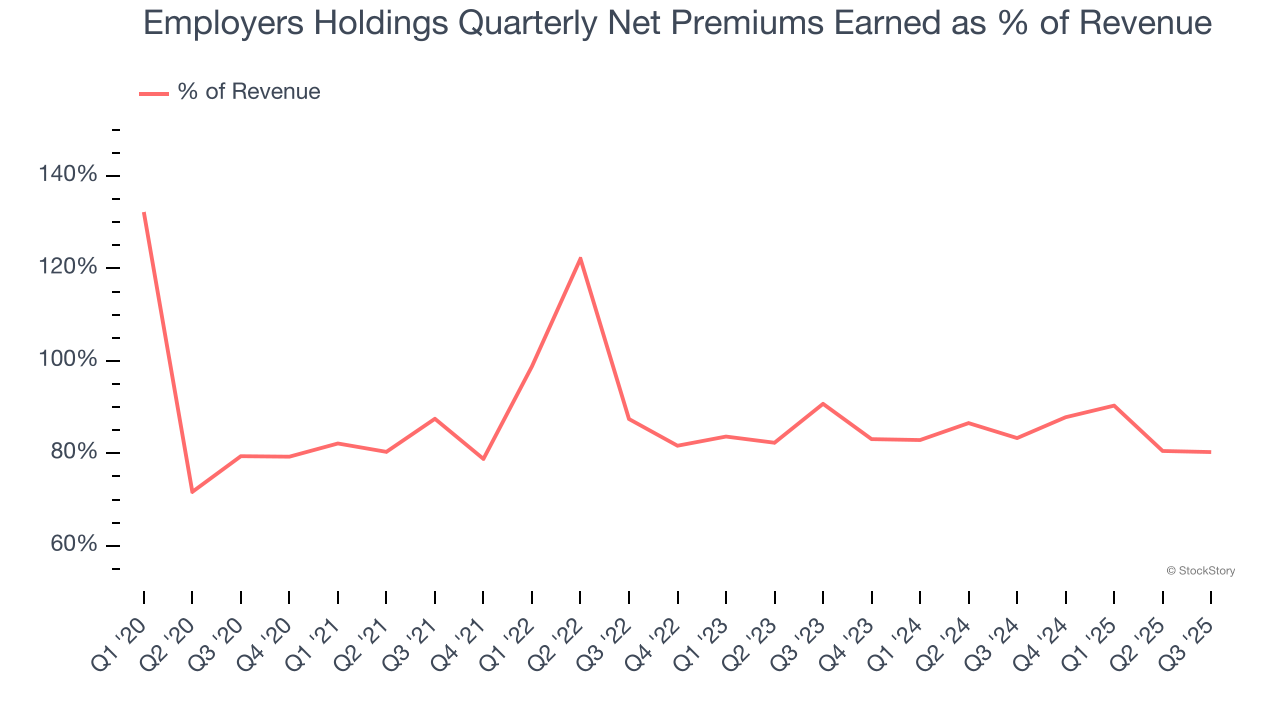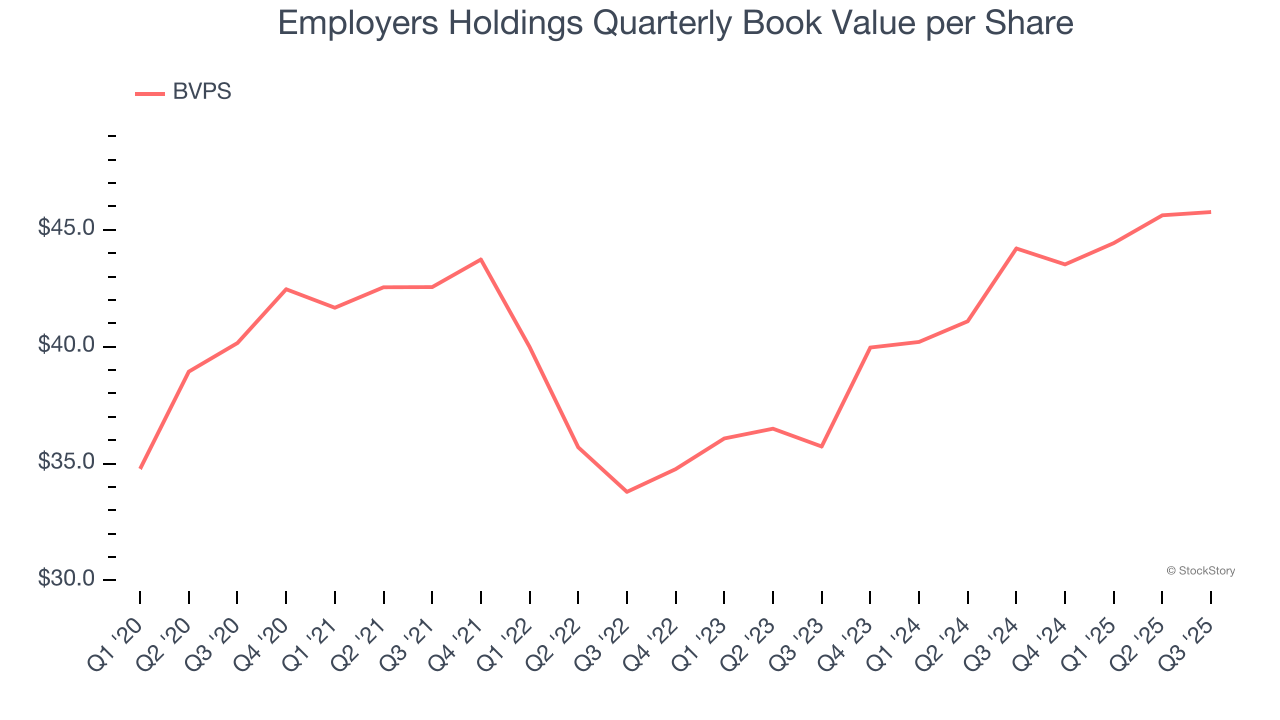
Workers' compensation insurer Employers Holdings (NYSE: EIG) reported Q3 CY2025 results topping the market’s revenue expectations, with sales up 6.8% year on year to $239.3 million. Its non-GAAP loss of $0.41 per share was significantly below analysts’ consensus estimates.
Is now the time to buy Employers Holdings? Find out by accessing our full research report, it’s free for active Edge members.
Employers Holdings (EIG) Q3 CY2025 Highlights:
- Net Premiums Earned: $192.1 million vs analyst estimates of $189.4 million (2.9% year-on-year growth, 1.4% beat)
- Revenue: $239.3 million vs analyst estimates of $216.9 million (6.8% year-on-year growth, 10.4% beat)
- Combined Ratio: 130% vs analyst estimates of 105% (2,515 basis point miss)
- Adjusted EPS: -$0.41 vs analyst estimates of $0.60 (significant miss)
- Book Value per Share: $45.76 vs analyst estimates of $49.73 (3.5% year-on-year growth, 8% miss)
- Market Capitalization: $947.3 million
Chief Executive Officer Katherine Antonello commented: “We once again ended the quarter with a record number of policies in-force, which were up 4% year-over-year. Third quarter gross premiums written increased 1%, and net premiums earned increased 3%, with growth in smaller policy size bands and strong renewals offsetting decreases within the middle market. Our ongoing appetite expansion initiative contributed to both policy count and premium growth. Targeted pricing and underwriting actions impacting certain classes and jurisdictions tempered our growth this quarter and confirmed our commitment to improving our underwriting margin over increasing our written premium. Strong investment income and continued net investment gains combined with our premium growth expanded total revenue by almost 7% in the quarter.
Company Overview
With roots in Nevada and a strong concentration in California where 45% of its premiums are generated, Employers Holdings (NYSE: EIG) is a specialty provider of workers' compensation insurance focused on small and select businesses engaged in low-to-medium hazard industries across the United States.
Revenue Growth
Insurers earn revenue three ways. The core insurance business itself, often called underwriting and represented in the income statement as premiums earned, is one way. Investment income from investing the “float” (premiums collected upfront not yet paid out as claims) in assets such as fixed-income assets and equities is the second way. Fees from various sources such as policy administration, annuities, or other value-added services is the third. Unfortunately, Employers Holdings’s 5.8% annualized revenue growth over the last five years was tepid. This was below our standard for the insurance sector and is a rough starting point for our analysis.

Long-term growth is the most important, but within financials, a half-decade historical view may miss recent interest rate changes and market returns. Employers Holdings’s recent performance shows its demand has slowed as its annualized revenue growth of 3.4% over the last two years was below its five-year trend.  Note: Quarters not shown were determined to be outliers, impacted by outsized investment gains/losses that are not indicative of the recurring fundamentals of the business.
Note: Quarters not shown were determined to be outliers, impacted by outsized investment gains/losses that are not indicative of the recurring fundamentals of the business.
This quarter, Employers Holdings reported year-on-year revenue growth of 6.8%, and its $239.3 million of revenue exceeded Wall Street’s estimates by 10.4%.
Net premiums earned made up 85.6% of the company’s total revenue during the last five years, meaning Employers Holdings barely relies on non-insurance activities to drive its overall growth.

Net premiums earned commands greater market attention due to its reliability and consistency, whereas investment and fee income are often seen as more volatile revenue streams that fluctuate with market conditions.
Software is eating the world and there is virtually no industry left that has been untouched by it. That drives increasing demand for tools helping software developers do their jobs, whether it be monitoring critical cloud infrastructure, integrating audio and video functionality, or ensuring smooth content streaming. Click here to access a free report on our 3 favorite stocks to play this generational megatrend.
Book Value Per Share (BVPS)
Insurance companies are balance sheet businesses, collecting premiums upfront and paying out claims over time. The float – premiums collected but not yet paid out – are invested, creating an asset base supported by a liability structure. Book value captures this dynamic by measuring:
- Assets (investment portfolio, cash, reinsurance recoverables) - liabilities (claim reserves, debt, future policy benefits)
BVPS is essentially the residual value for shareholders.
We therefore consider BVPS very important to track for insurers and a metric that sheds light on business quality. While other (and more commonly known) per-share metrics like EPS can sometimes be lumpy due to reserve releases or one-time items and can be managed or skewed while still following accounting rules, BVPS reflects long-term capital growth and is harder to manipulate.
Employers Holdings’s BVPS grew at a sluggish 2.6% annual clip over the last five years. However, BVPS growth has accelerated recently, growing by 13.2% annually over the last two years from $35.73 to $45.76 per share.

Over the next 12 months, Consensus estimates call for Employers Holdings’s BVPS to grow by 11.7% to $49.73, decent growth rate.
Key Takeaways from Employers Holdings’s Q3 Results
We were impressed by how significantly Employers Holdings blew past analysts’ revenue expectations this quarter. We were also glad its net premiums earned outperformed Wall Street’s estimates. On the other hand, its EPS missed and its book value per share fell short of Wall Street’s estimates. Overall, this quarter could have been better. The stock remained flat at $40.51 immediately following the results.
Employers Holdings’s latest earnings report disappointed. One quarter doesn’t define a company’s quality, so let’s explore whether the stock is a buy at the current price. If you’re making that decision, you should consider the bigger picture of valuation, business qualities, as well as the latest earnings. We cover that in our actionable full research report which you can read here, it’s free for active Edge members.





